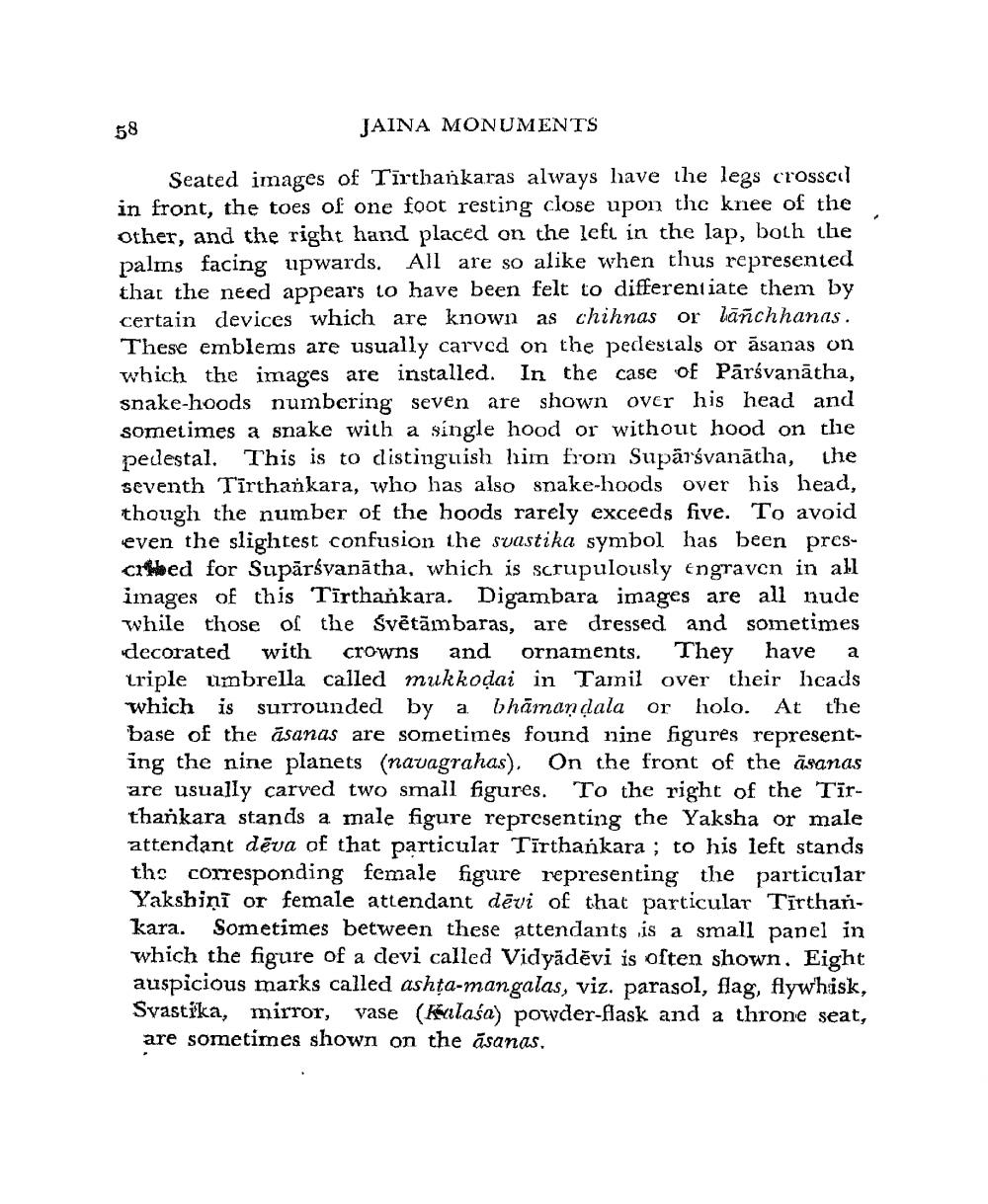________________
58
JAINA MONUMENTS
Seated images of Tirthankaras always have the legs crossed in front, the toes of one foot resting close upon the knee of the other, and the right hand placed on the left in the lap, both the palms facing upwards. All are so alike when thus represented that the need appears to have been felt to differentiate them by certain devices which are known as chihnas or lañchhanas. These emblems are usually carved on the pedestals or asanas on which the images are installed. In the case of Pārśvanatha, snake-hoods numbering seven are shown over his head and sometimes a snake with a single hood or without hood on the pedestal. This is to distinguish him from Suparśvanatha, the seventh Tirthankara, who has also snake-hoods over his head, though the number of the hoods rarely exceeds five. To avoid even the slightest confusion the svastika symbol has been prescred for Suparśvanatha, which is scrupulously engraven in all images of this Tirthankara. Digambara images are all nude while those of the Svētāmbaras, are dressed and sometimes decorated with crowns and ornaments. They have a triple umbrella called mukkoḍai in Tamil over their heads which is surrounded by a bhamandala or holo. At the base of the asanas are sometimes found nine figures representing the nine planets (navagrahas). On the front of the asanas are usually carved two small figures. To the right of the Tirthankara stands a male figure representing the Yaksha or male attendant deva of that particular Tīrthańkara; to his left stands the corresponding female figure representing the particular Yakshini or female attendant devi of that particular Tirthankara. Sometimes between these attendants is a small panel in which the figure of a devi called Vidyādēvi is often shown. Eight auspicious marks called ashṭa-mangalas, viz. parasol, flag, flywhisk, Svastika, mirror, vase (Kalasa) powder-flask and a throne seat, are sometimes shown on the asanas.




